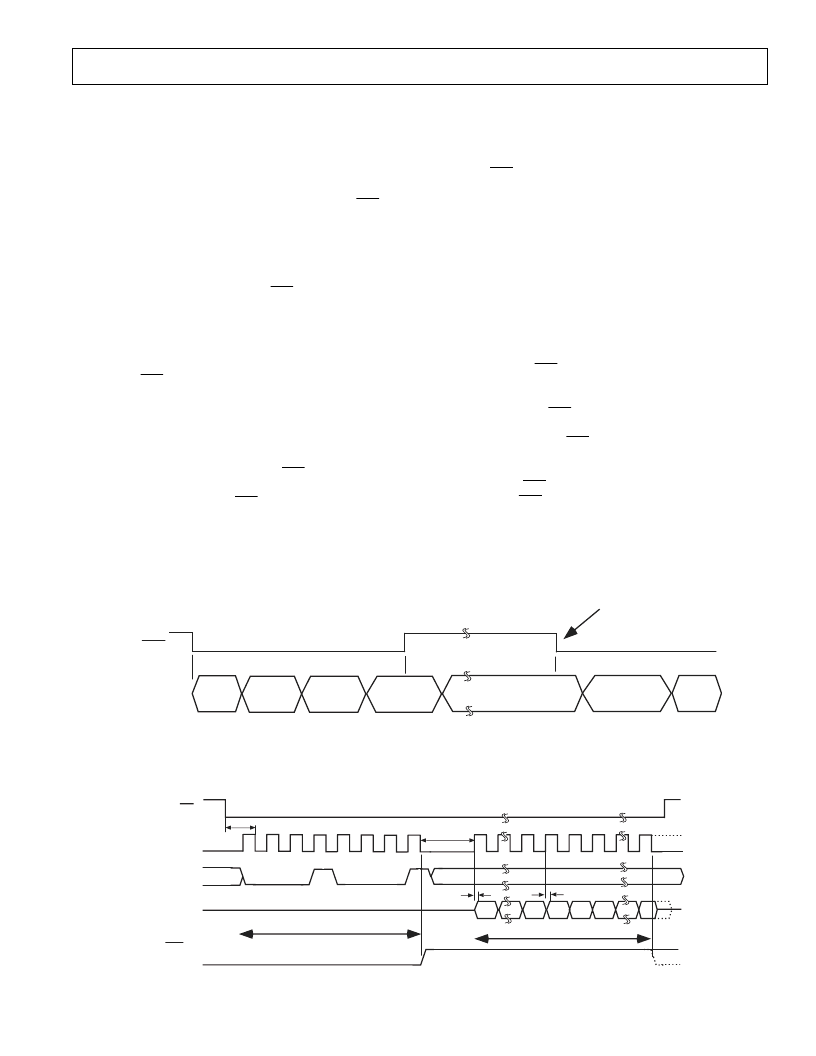- 您現(xiàn)在的位置:買賣IC網(wǎng) > PDF目錄373980 > ADE7754AR (ANALOG DEVICES INC) ADE7754 PDF資料下載
參數(shù)資料
| 型號: | ADE7754AR |
| 廠商: | ANALOG DEVICES INC |
| 元件分類: | 模擬信號調(diào)理 |
| 英文描述: | ADE7754 |
| 中文描述: | SPECIALTY ANALOG CIRCUIT, PDSO24 |
| 封裝: | MS-013AD, SOIC-24 |
| 文件頁數(shù): | 33/44頁 |
| 文件大小: | 630K |
| 代理商: | ADE7754AR |
第1頁第2頁第3頁第4頁第5頁第6頁第7頁第8頁第9頁第10頁第11頁第12頁第13頁第14頁第15頁第16頁第17頁第18頁第19頁第20頁第21頁第22頁第23頁第24頁第25頁第26頁第27頁第28頁第29頁第30頁第31頁第32頁當(dāng)前第33頁第34頁第35頁第36頁第37頁第38頁第39頁第40頁第41頁第42頁第43頁第44頁

REV. PrG 01/03
PRELIMINARY TECHNICAL DATA
ADE7754
–
33
–
ADE7754 INTERRUPTS
ADE7754 Interrupts are managed through the Interrupt
Status register (STATUS[15:0], Address 10h) and the Inter-
rupt Mask register (MASK[15:0], Address 0Fh). When an
interrupt event occurs in the ADE7754, the corresponding
flag in the Interrupt Status register is set to a logic one - see
ADE7754 Interrupt Status register
. If the mask bit for this interrupt
in the Interrupt Mask register is logic one, then the
IRQ
logic
output goes active low. The flag bits in the Interrupt Status
register are set irrespective of the state of the mask bits.
In order to determine the source of the interrupt, the system
master (MCU) should perform a read from the Reset Inter-
rupt Status register with reset. This is achieved by carrying
out a read from address 11h. The
IRQ
output will go logic
high on completion of the Interrupt Status register read
command
—
see
Interrupt timing
. When carrying out a read with
reset the ADE7754 is designed to ensure that no interrupt
events are missed. If an interrupt event occurs just as the
Interrupt Status register is being read, the event will not be
lost and the
IRQ
logic output is guaranteed to go high for the
duration of the Interrupt Status register data transfer before
going logic low again to indicate the pending interrupt.
Using the ADE7754 Interrupts with an MCU
Shown in Figure 45 is a timing diagram which illustrates a
suggested implementation of ADE7754 interrupt manage-
ment using an MCU. At time
t
1
the
IRQ
line will go active
low indicating that one or more interrupt events have oc-
curred in the ADE7754. The
IRQ
logic output should be tied
to a negative edge triggered external interrupt on the MCU.
On detection of the negative edge, the MCU should be
configured to start executing its Interrupt Service Routine
(ISR). On entering the ISR, all interrupts should be disabled
using the global interrupt mask bit. At this point the MCU
external interrupt flag can be cleared in order to capture
interrupt events which occur during the current ISR. When
the MCU interrupt flag is cleared, a read from the Reset
Interrupt Status register with reset is carried out. This will
cause the
IRQ
line to be reset logic high (
t
2
)
—
see
Interrupt
timing
. The Reset Interrupt Status register contents are used
to determine the source of the interrupt(s) and hence the
appropriate action to be taken. If a subsequent interrupt event
occurs during the ISR (
t
3
), that event will be recorded by the
MCU external interrupt flag being set again. On returning
from the ISR, the global interrupt mask bit will be cleared
(same instruction cycle) and the external interrupt flag will
cause the MCU to jump to its ISR once again. This will
ensure that the MCU does not miss any external interrupts.
Interrupt timing
The
ADE7754 Serial Interface
section should be reviewed first
before reviewing the interrupt timing. As previously de-
scribed, when the
IRQ
output goes low the MCU ISR must
read the Interrupt Status register in order to determine the
source of the interrupt. When reading the Interrupt Status
register contents, the
IRQ
output is set high on the last falling
edge of SCLK of the first byte transfer (read Interrupt Status
register command). The
IRQ
output is held high until the last
bit of the next 8-bit transfer is shifted out (Interrupt Status
register contents). See Figure 46. If an interrupt is pending
at this time, the
IRQ
output will go low again. If no interrupt
is pending the
IRQ
output will remain high.
IRQ
t
1
Jump to
ISR
Global int.
Mask
Clear MCU
int. flag
Read
Status with
Reset (11h)
ISR Action
( Based on Status contents)
ISR Return
Global int. Mask
Reset
t
2
t
3
MCU
int. flag set
Jump to
ISR
Program
Sequence
Figure 45
–
ADE7754 interrupt management
CS
SCLK
DIN
t
1
t
11
t
12
t
9
DB15
DOUT
DB0
DB8 DB7
0
0
0
Read Status Register Command
0
1
0
0
1
IRQ
Status Register Contents
Figure 46
–
ADE7754 interrupt timing
相關(guān)PDF資料 |
PDF描述 |
|---|---|
| ADE7754ARRL | ADE7754 |
| ADE7755AN-REF | Energy Metering IC with Pulse Output |
| ADE7755ARSRL | Energy Metering IC with Pulse Output |
| ADE7755 | Energy Metering IC with Pulse Output |
| ADE7755ARS | Energy Metering IC with Pulse Output |
相關(guān)代理商/技術(shù)參數(shù) |
參數(shù)描述 |
|---|---|
| ADE7754ARRL | 制造商:Analog Devices 功能描述:Energy Measurement 24-Pin SOIC W T/R 制造商:Rochester Electronics LLC 功能描述:THREE PHASE ENERGY METER IC W/WATT & VA - Bulk |
| ADE7754ARZ | 功能描述:IC ENERGY METERING 3PHASE 24SOIC RoHS:是 類別:集成電路 (IC) >> PMIC - 能量測量 系列:- 產(chǎn)品培訓(xùn)模塊:Lead (SnPb) Finish for COTS Obsolescence Mitigation Program 標(biāo)準(zhǔn)包裝:2,500 系列:* |
| ADE7754ARZRL | 功能描述:IC ENERGY METERING 3PHASE 24SOIC RoHS:是 類別:集成電路 (IC) >> PMIC - 能量測量 系列:- 產(chǎn)品培訓(xùn)模塊:Lead (SnPb) Finish for COTS Obsolescence Mitigation Program 標(biāo)準(zhǔn)包裝:2,500 系列:* |
| ADE7755 | 制造商:AD 制造商全稱:Analog Devices 功能描述:Energy Metering IC with Pulse Output |
| ADE7755AARSRL | 制造商:Analog Devices 功能描述:ENERGY METERING IC WITH P - Tape and Reel |
發(fā)布緊急采購,3分鐘左右您將得到回復(fù)。